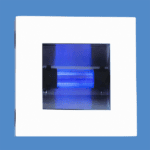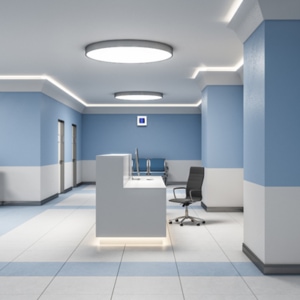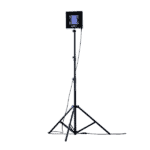UV Disinfecting Bulbs Safe for Occupied Spaces

Ultraviolet light has been used for over a century as a disinfectant. Most germicidal UV light is in the UV-C range with the most popular strength of light being 254nm. This wavelength is not safe for humans but is highly effective when it comes to germicide.
Safe UV manufacturers lamps in the Far-UV range, specifically at 222nm. Our 222nm lamps are safe for human exposure while providing the same germicidal efficacy at the commonly-used 254nm level.
While UV-C and Far-UV are both excellent tools for disinfection, there are major differences between them.
1. UV-C and Far-UV are both absorbed by a pathogen’s DNA, disrupting the structure and preventing it from replicating.
UV-C disinfection disrupts a pathogen’s DNA. The Far-UV difference is that it is also absorbed by the pathogen’s proteins. With Far-UV penetration of a pathogen’s DNA and proteins, a microbe’s chance for photo-reactivation is all but eliminated.
2. When only the DNA is damaged with 254nm photons, a microbe can potentially use ordinary light to repair that damage and reactivate.
Far-UV provides a more complete eradication of the target pathogen by destroying both its DNA and the proteins necessary for the pathogen to rebuild.
Safety
Human Safe
The remarkable difference between traditional germicidal UV-C and Far-UV is safety. UV is measured in dosage as a factor of output and distance. There are standards in place for exposure limits that are applied when using this technology.
While UV-C at 254nm has been proven to cause damage to skin and eyes, Far-UV is not able to penetrate the outer layer of skin or the tear layer in the eye, making it safe for human exposure.
Disinfection
Superior Efficacy
Although dangerous airborne and surface pathogens are invisible to the naked eye, their presence can have serious health implications. Our technology works on a molecular level to eradicate threats like coronavirus. safeUV Excimer Lamp technology completely destroys harmful pathogens and viruses within the core of their DNA.
By incorporating safeUV lamps through overhead or handheld integration, microbes are eradicated in seconds. With 99.99% effectiveness, this technology can disinfect entire surfaces in less than 5 seconds. When compared to handheld UVC products that can take upwards of 20 minutes to disinfect, safeUV is the ideal option for commercial and industrial applications.
The versatile nature of this next-generation technology can also be incorporated into HVAC systems to achieve extraordinarily high air quality throughout a wide range of spaces. The proven disinfecting power of safeUV lamps is confirmed by over 40 clinical studies, a testament to the high volume of interest surrounding this revolutionary technology.

Case Study
Far‑UV (222nm) efficiently inactivates an airborne pathogen in a room‑sized chamber
One recently published study has explored Far-UV light’s ability to disinfect the air in a room where pathogens are constantly being introduced. The groundbreaking research solidifies the benefits of Far-UV in real-world applications to protect people from harmful airborne pathogens.
Findings
The study confirms that when a continuous, controlled source of airborne pathogens is introduced into a realistically sized room with typical ventilation, Far-UVC light rapidly destroys a significant amount of those airborne pathogens. The study shows a roughly 92% reduction in pathogens over the span of 15 minutes when the light was introduced at levels below the safety threshold*. When applied at the top of threshold levels* Far-UVC light reduced airborne pathogens at a rate of 98% over 5 minutes.
The importance of appropriate installation was also highlighted in the study, noting that a single light produced 94% pathogen eradication, but due to only a single lamp being installed, areas of the room were left unreached, and thus un-sanitized. In real rooms, with less effective HVAC systems or less airflow, the pathogen reduction could be significantly lower. When a diffusing material is applied to the Far-UVC source, the irradiation pattern and reach increases significantly.
Finally, Far-UVC was compared to the efficacy rates of commercially available portable air cleaners. A scenario with five Far-UVC lamps significantly outperformed even higher flow HEPA-based air cleaners. Although the design and installation of a Far-UVS system has a higher degree of complexity than a “plug and play” portable air cleaner, Far-UVC lasts longer, cleans better, and is silent.
* ICNIRP guideline exposure limits


Safe UV Lamps
safeUV proudly manufactures innovative UV lamps, safe for human exposure. We supply our lamps to OEM partners seeking to incorporate the highest quality UV lamps into their spaces and products. Made to exacting standards, safeUV lamps provide superior elimination of surface, airborne and liquid pathogens.



